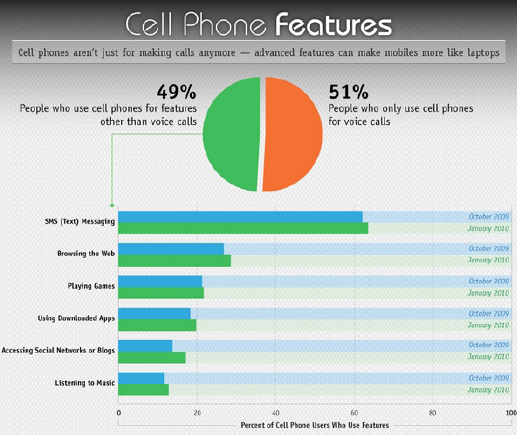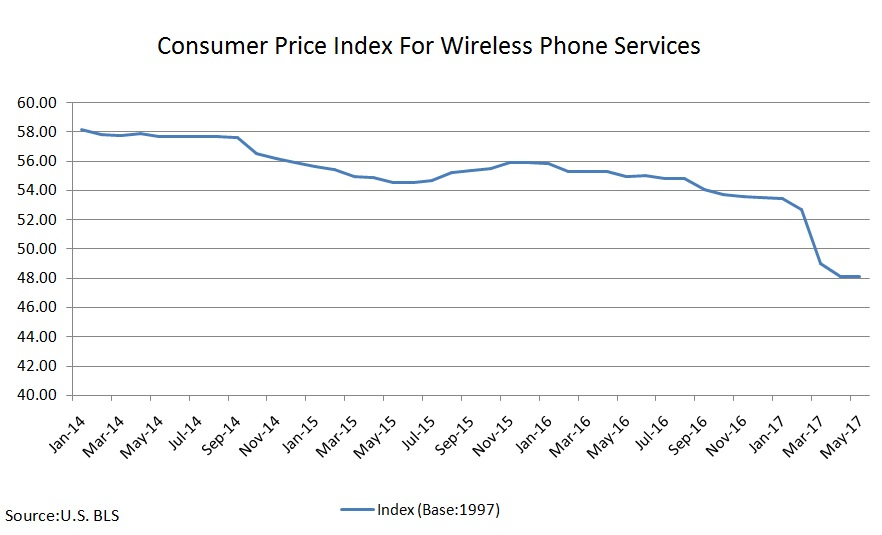5 Ways Wireless Telecom Expense Management Reduces Cost For Enterprise
If you are not proactively managing your mobile costs with some form of wireless telecom expense management, you are literally burning Time and Money each and every billing cycle.
In fact, there is a pretty good chance that you are spending close to, if not more than $15 or more each cycle for EVERY device currently in use.
But it’s not your fault. Wireless carriers are brilliant marketers who can sometimes make simple things very complex. Your monthly wireless billings are a great example of these marketing tactics in action. Often billing terminology is complex and unless you are a seasoned wireless billing analyst, you will probably have a difficult time of determining where this $25 in overspending occurs.
Therefore, we’ve put together this white paper to give you 5 ways you can easily save around $5 per device every billing cycle.
Please note that because everyone’s wireless usage is different and there can’t possibly develop a cookie-cutter template to follow.
So we designed this guide to be more of a general “road-map” for saving money on your wireless bills. These optimization techniques can be applied to almost any U.S.-based wireless subscriptions. Ok, lets get started:
1. Renegotiate Falling Rates with your Carrier
Did you know you have the ability to renegotiate your wireless rates with your carrier at any time? Let us say that again: you can renegotiate your rates whenever you want.
And you should be doing this often. Because wireless rates continue to fall month after month, it is beneficial to
renegotiate frequently.
Here’s some evidence:
- According to Forbes “the consumer price index for wireless services in the U.S. declined by close to 9% over March and April alone”
Here’s what to do:
- Use a simple approach to get a quote from at least 3 carriers. Let them all know you are looking for the best price for your number of devices and how you use them so they can come up with something creative just for you.The more you spend with the more devices you have, the better your deal. Statistics also show that if you are moving along the technology continuum, you are adding more devices and spending more on things like data plans. The carrier should reward you for this and give you better pricing deals.
- Typically the specific early termination fee (ETF) is tied to each individual phone number on your account and the overall corporate agreement is a buying agreement. Therefore, if you don’t like the terms, update them with penalties only for specific devices you cancel off that carrier.
- You can ask for bonuses like free text messaging (very common these days), discounts on roaming plans or increases in access fee discounts.
2. Optimize your voice plan
Consolidate, consolidate, consolidate. Especially on voice plans that can pool, you can really take advantage of large numbers of users for the best cost.
Here’s some evidence:
- Source: Yankee Group, 2009
The Bottom Line: Get a corporate plan from an enterprise-savvy carrier and stop reimbursing individual-liable cell phone bills. An average 125-person U.S.-based SMB will save $96,000 or 47 percent in the first year (51 percent over three years), yielding a six-month payback period. - Most companies should continue to support corporate liability in order to retain control over security, costs and the future direction of mobility in the enterprise (see: Companies Should Keep Control of Cellular Users Through Corporate Liability, January 2010).
Here’s what to do:
- Pool all voice minutes into one plan and take advantage of mixing high users with very inexpensive addon plans. Monitor the pool to make sure it fits the usage needs. If you need less minutes, reduce the pool; if more minutes, increase the pool (that one almost sounds too easy, but it’s effective).
- Be sure to add international calling or roaming features to those devices traveling or calling internationally.
- Try to use more mobile-to-mobile (MTM) minutes when possible (e.g. call from one wireless to another instead of calling the user’s landline number).
- Exploit programs like Verizon’s “Friends and Family” or ATT’s A-list. The Bill Police has had extremely successful reductions in cost by managing the way organizations use their minutes (see Figure 2).

3. Optimize your data plan
Pop Quiz! How much data revenue was billed 10 years ago according to the CTIA, the International Association for the Wireless Telecommunications Industry? Trick question: wireless data service was not available in 2001.
Flash forward to 2010. In just the first half of the year wireless carriers data revenues topped $46.8 Billion (yes, with a “B”). Is it even necessary to say that’s a big increase? (See Figure 3)
Here’s what to do:
-
- Monitor your data usage. This will be key as data rates move to limited plans. It is very easy to use a bunch of GB without even realizing it is stacking up. We just recently saw a one user of an Enterprise earn a bill for one phone in the organization for over $10,000. Yikes.
- Hang on to your grandfathered unlimited data plans. These plans will give you a great ROI while using lots of data
- Limit your streaming video to your unlimited data rate devices (**please note: broadband cards generally do NOT have unlimited plans!)
- Like voice, be sure to add international calling or roaming features to those devices traveling or calling internationally. Some carriers have offered unpublished unlimited international data plans for very reasonable prices, so ASK.
Ask carriers for creative discounts based on your organization’s unique usage: they can do this and usually will.
4. Optimize your features
Only a few short years ago, who would have thought GPS, Apps, tablets, MP3s or a camera on every phone would play such an important role in your workforce? While these features can be great productivity tools, they can also come with some hefty price tags.
Here’s some evidence:
Figure 3 shows features being used on wireless devices – comparing 2009 usage to 2010 usage. Many activities are taking place on wireless devices that have nothing to do with talking on a phone.
Additionally, in each category, it is fast approaching or over 20% of all users using these features and it is growing from year to year.
Here’s what to do:
-
-
- If you are traveling, add roaming and international features, but REMEMBER to remove them when you stop traveling. Often users will add an international feature and simply forget to take it off. This can cost an average of $5 per month with no benefit.
- For messaging, many people think unlimited is a good way to go and this usually is a safe bet, but not necessarily a good financial one. Take a look at your last few months of bills, check trending, determine a benchmark then stick to it. For example, reduce a $20 unlimited plan to a $5 plan for 250 messages and then keep your messages under 250 saving yourself $15 per month, each month.
- Watch out for “special features” like Roadside Assistance. This can get added free for a promotional period of time then rolls to a paid feature if you don’t contact the carrier to remove it. Monitor the bill for charges like these that “magically” appear.
- GPS and Directory assistance can be conducted via the data plan on your phone. Don’t pay extra for services you are already paying for with your data plan.
-

5. Change your behavior
Optimization is a very significant part of how we manage bills; typically at least 30% of our total savings each month. While there are many things we can do to change the rate plans, a big responsibility lies in the behavior management of our customers. Usually it is just an educational process to let users know better more inexpensive ways to do things and bills will decrease as a result.
Here’s what you to do:
-
-
- Carriers now offer many options to more easily manage your device online. Monitor your trends, check usage and adjust plans regularly. Monitor, adjust/compare and then track.
- Change usage behavior to use minutes at their least expensive rate: use voice off-peak or MTM minutes
- Monitor your data usage and keep streaming to a minimum unless you have an unlimited plan, then keep usage to below 5 GB.
- Directory assistance – this one is a killer, averaging $2 per call. Changing usage behavior is the only way to manage this annoying cost. Use the contacts app to keep phone numbers or look up the phone number with your web or data plan.
- Pay attention to users on your account who are using not using minutes, data or features. Suspend or cancel them.
- Choose how you message. Get a plan that has unlimited MTM messaging or voice then text or talk to those users to your hearts content. Otherwise, lock it down on those users not in your network. This is a way to get lots of usage for your buck.
-
THE BOTTOM LINE: RIGHT PLAN. RIGHT PRICE. RIGHT RESULT.
Stop getting robbed by your wireless bills.
Put these tactics to work and you could literally be saving $25 per phone each billing cycle. There are many areas where you yourself can make significant changes to your billing without sacrificing your rights. However, for larger companies Phillip Redmon from Gartner suggests, “Consider bringing on telecom expense management services”.
In most cases, organizations that have over 250 devices in use can avoid thousands of dollars in unnecessary overspend each year by outsourcing the management of their wireless billings.
We Can Help
Do you have over 250 phones in use at your company?
Let us analyze your current wireless bills and we’ll give you an in-depth report highlighting problem areas and opportunities within your wireless program.
This Free Analysis is 100% confidential and there’s absolutely no obligation. It’s easy to get started, click here.

